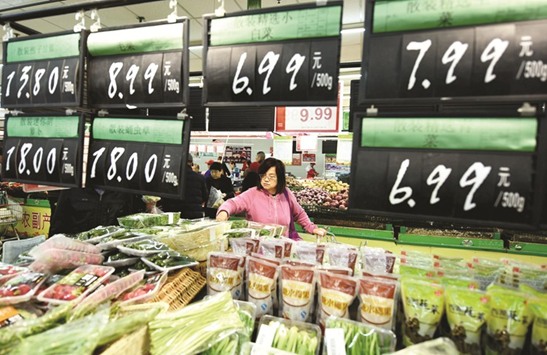China’s economy likely grew by a solid 6.8% in the first quarter, the same pace as the previous quarter, due to sustained government infrastructure spending and a gravity-defying housing market, according to a Reuters poll of 60 economists.
But the world’s second-largest economy is widely expected to lose steam later in the year as the impact of earlier stimulus measures starts to fade and as local authorities step up a battle to rein in red-hot housing prices.
A tighter monetary policy stance by the central bank and intensifying efforts by regulators to contain debt risks and asset bubbles could also weigh on growth in the world’s second-largest economy if not handled well, economists said.
“Growth is still driven by infrastructure investment and the property sector, but property investment is likely to slow in the second half due to curbs on home buying and mortgages,” said Tang Jianwei, economist at Bank of Communications in Shanghai.
“The economy is stabilising and warming up, but there are still downside risks in the medium term.”
A surprisingly upbeat reading would likely boost stocks and global commodity prices, but a weak outcome could fuel the risk of more capital outflows, putting fresh pressure on the yuan currency.
The government is aiming for 2017 growth of around 6.5%, slightly lower than last year’s target of 6.5%-7% and the actual 6.7%, which was the weakest pace in 26 years.
Top leaders have signalled tolerance for more modest growth this year to help defuse financial risks created by an explosive growth in debt.
Economists in the poll estimated GDP grew 1.6% quarter-on-quarter, versus 1.7% in the fourth quarter, though only 25 analysts gave sequential forecasts.
Most analysts agree the property market may pose the single biggest immediate risk to growth.
In March and early April, more than a dozen local governments imposed or tightened restrictions on home purchases and tightened mortgage down payment rules, after data showed housing prices, sales and investment remained strong, defying earlier cooling measures.
Increasingly tough measures are expected to slow activity in the property market eventually, but at the risk of a nasty crash that would damage the economy and consumer confidence.
At the same time, China’s central bank has shifted to a tightening bias and is using more targeted measures to contain risks in the financial system, after years of ultra-loose settings.
The People’s Bank of China (PBoC) has raised short-term interest rates modestly several times already this year and some market watchers expect one or two more hikes by year-end.
But it is considered unlikely to tighten policy abruptly ahead of a major leadership transition later this year.
Indeed, some analysts believe the government could quickly unwind tightening measures and revert to traditional pump-priming if growth slows too sharply, despite official warnings about the dangers of prolonged debt-fuelled stimulus.
The Organisation for Economic Co-operation and Development (OECD) says China’s total private and public debt has exceeded 250% of GDP, up from 150% before the global financial crisis. China will release first-quarter gross domestic product (GDP) on April 17, along with March industrial output, retail sales and fixed asset investment.
Industrial output likely grew at a steady 6.3% pace in March, aided by a continuing construction boom and a pickup in export orders as global demand improves.
Fixed asset investment was expected to grow 8.8% in the first quarter, easing marginally from 8.9% in the first two months of the year.
Investors and policymakers will be watching for any further signs of improvement in private investment, which quickened in January and February after a sharp loss of momentum in the last few years.
Retail sales could remain a source of concern, however. Growth is expected to pick up only marginally to 9.6% in March from 9.5% in January and February combined, which was the weakest pace in nearly two years. Still, China auto sales grew 7% in the first quarter, the strongest January-March period since 2014 and raising the possibility of an upside surprise.
Growth in car sales was expected to be weaker this year after the government reduced tax incentives on small cars. Data on Wednesday showed China’s producer price inflation cooled for the first time in seven months in March as iron ore and coal prices tumbled, pressured by fears that Chinese steel production is outweighing demand.
Consumer prices remained mild.
March trade figures will be issued today, with an expected rebound in exports being overshadowed by concerns about a rise in US protectionism.

Customers select vegetables at a supermarket in Hangzhou, Zhejiang province. China is aiming for 2017 growth of around 6.5%, slightly lower than last year’s target of 6.5%-7% and the actual 6.7%, which was the weakest pace in 26 years.

